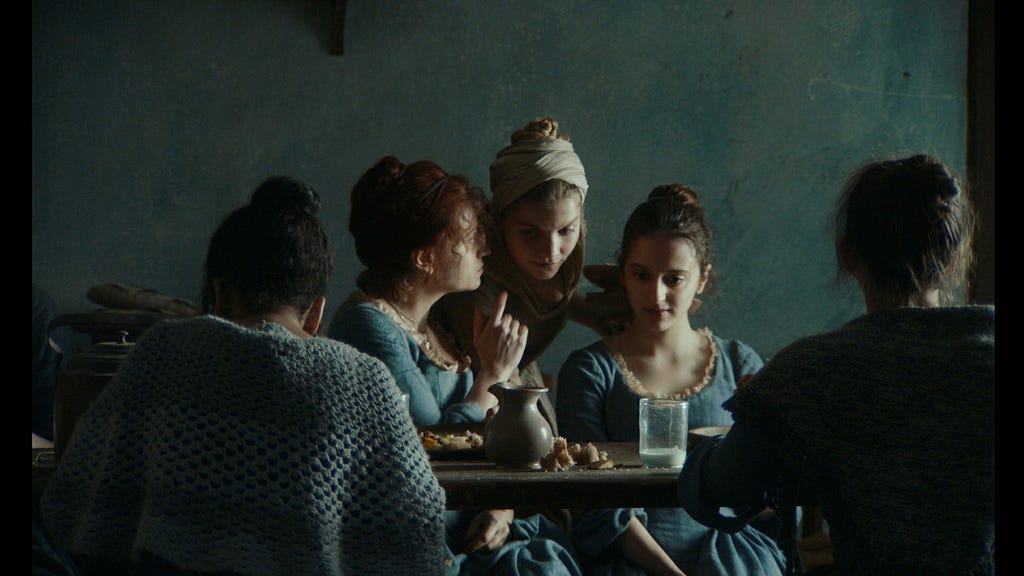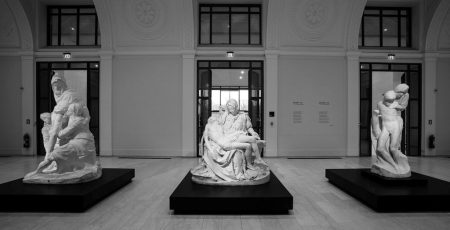Gloria: A Feminist Ballad in 18th-Century Venice – A Detailed Analysis
Margherita Vicario’s "Gloria: The Miracle in Venice" transports viewers to 18th-century Venice, weaving a tale of resilience and artistic expression against a backdrop of patriarchal oppression. The film centers on Teresa, a young servant rendered mute by the traumas of parental loss and sexual assault at the hands of the local governor. In this stifling environment, music becomes her solace, a secret language through which she navigates the world. The film cleverly uses sound design, capturing everyday noises like kitchen clatter and church bells, and transforming them into a vibrant, almost anachronistically modern soundtrack. This deliberate clash of eras serves to highlight the film’s core message: a rebellion against the rigid, religious norms that perpetuate male dominance.
Teresa’s life takes a turn when she discovers a hidden piano in the basement of the music school for orphaned girls where she works. The instrument, intended for the students but concealed by the cruel director Perlina, becomes a magnet for Teresa and the other girls, transforming the cellar into a sanctuary of musical exploration. Their shared experiences of hardship and marginalization fuel a potent mix of feminist empowerment and artistic creation. The film portrays the girls’ musical journey as an act of defiance, a way to break free from the enforced silence and reclaim their voices. While the narrative may tread familiar ground at times, Vicario, known primarily as a musician, injects the film with an undeniable emotional intensity, especially in the powerful ballad sequences.
The cinematography further underscores the film’s focus on female empowerment. The camera lingers on the girls’ faces, capturing their raw emotion and passion. Vicario intentionally eschews conventional beauty standards, presenting the girls in their natural state, emphasizing their strength and vulnerability. This visual approach directly confronts the pervasive male gaze, offering an alternative perspective that celebrates female authenticity. In contrast, the male characters, particularly the villainous Perlina, are often depicted in a comical or pathetic light, their pretensions and hypocrisy exposed through their desperate attempts to control the narrative and claim artistic credit. The governor, another antagonist, is portrayed as a caricature of corruption, his concealed homosexuality serving as a rather clichéd marker of his villainy.
While the film’s thematic focus on music and a muted protagonist draws parallels to Jane Campion’s "The Piano," Vicario’s approach to sensuality differs significantly. In “The Piano,” the tactile imagery resonates deeply, creating a visceral experience for the viewer. "Gloria," however, employs a more superficial approach to sensuality, using it more as a stylistic flourish than a deeply embedded element of the narrative. The rapid-fire editing, reminiscent of music videos, prioritizes rhythm and visual impact over sustained intimacy. This stylistic choice aligns with Teresa’s journey from silent observer to expressive artist, but it also limits the film’s emotional depth. The connection between form and content, while conceptually intriguing, ultimately prevents the film from fully realizing its potential for profound emotional resonance.
Despite its limitations, "Gloria" offers a powerful and timely message about the importance of female voices in a world still dominated by patriarchal structures. The film’s strength lies in its passionate portrayal of female camaraderie and its celebration of music as a tool for liberation. While the narrative may not be groundbreaking, the film’s emotional core and its unwavering commitment to showcasing female empowerment resonate strongly. Vicario’s background as a musician imbues the film with a unique musicality, transforming the soundtrack into a driving force of the narrative. This musicality, combined with the film’s visually striking portrayal of female solidarity, makes "Gloria" a compelling exploration of resilience and artistic expression in the face of adversity.
Ultimately, "Gloria" serves as a vibrant and musically charged testament to the power of female creativity and the enduring struggle for self-expression. While the film may not fully escape the predictable beats of its genre, its heartfelt portrayal of female friendship and artistic liberation makes it a worthwhile cinematic experience. The film’s focus on reclaiming female narratives, often silenced or marginalized throughout history, resonates powerfully in contemporary society. While the film’s stylistic choices and character development may not always be entirely successful, its central message of empowerment rings true, offering a poignant and timely reminder of the importance of amplifying female voices.














